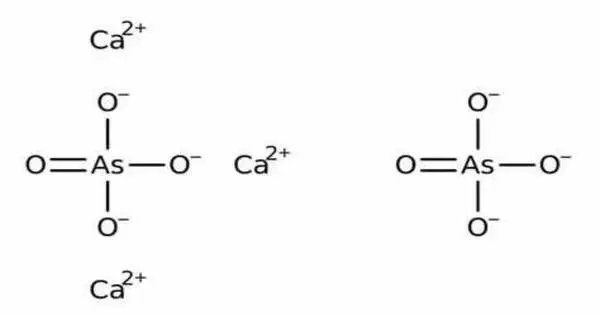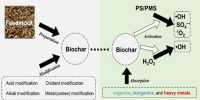Calcium arsenate is an inorganic chemical with the formula Ca3(AsO4)2. It’s a colorless salt that was originally employed as a pesticide and germicide. It is extremely soluble in water, as opposed to lead arsenate, which makes it more dangerous. The minerals rauenthalite Ca3(AsO4)2•10H2O and phaunouxite Ca3(AsO4)2•11H2O are hydrates of calcium arsenate.
Because of its toxicity and environmental issues, the usage of calcium arsenate and other arsenic-based insecticides has mostly been replaced by safer and more ecologically friendly alternatives. Regulations and restrictions on the use of arsenic-based chemicals in agriculture have also been imposed in several countries to safeguard human health and the environment.
Properties
- Chemical formula: Ca3(AsO4)2
- Molar mass: 398.072 g/mol
- Appearance: white powder
- Odor: odorless
- Density: 3.62 g/cm3, solid
- Melting point: 1,455 °C (2,651 °F; 1,728 K) (decomposes)
- Solubility in water: 0.013 g/100 mL (25 °C)
- Solubility in Organic solvents: insoluble
- Solubility in acids: soluble
Preparation
Calcium arsenate is commonly prepared from disodium hydrogen arsenate and calcium chloride:
2 Na2H[AsO4] + 3 CaCl2 → 4 NaCl + Ca3[AsO4]2 + 2 HCl
It was created in big vats in the 1920s by combining calcium oxide and arsenic oxide. 1360 metric tons were produced in the United States in 1919, 4540 in 1920, and 7270 in 1922. The composition of commercially available calcium arsenate differs depending on the producer. A common composition is 80-85% Ca3(AsO4)2, a basic arsenate with a 4CaO.As2O5 composition, combined with calcium hydroxide and calcium carbonate.
Application
Historically, calcium arsenate was employed as a pesticide to manage agricultural pests, particularly in the early to mid-20th century. However, due to its toxicity to humans and the environment, the usage of calcium arsenate as a pesticide has fallen dramatically. Arsenic compounds are very poisonous and can cause major health problems if consumed or inhaled. Prolonged exposure to arsenic can result in a variety of health concerns, including cancer, skin difficulties, and neurological issues.
Toxicity and regulation
Calcium arsenate is extremely hazardous, causing both carcinogenesis and systemic health problems. The Occupational Safety and Health Administration has established a tolerable exposure limit of 0.01 mg/m3 for an eight-hour time-weighted average, although the National Institute for Occupational Safety and Health suggests a limit five times lower (0.002 mg/m3).
















